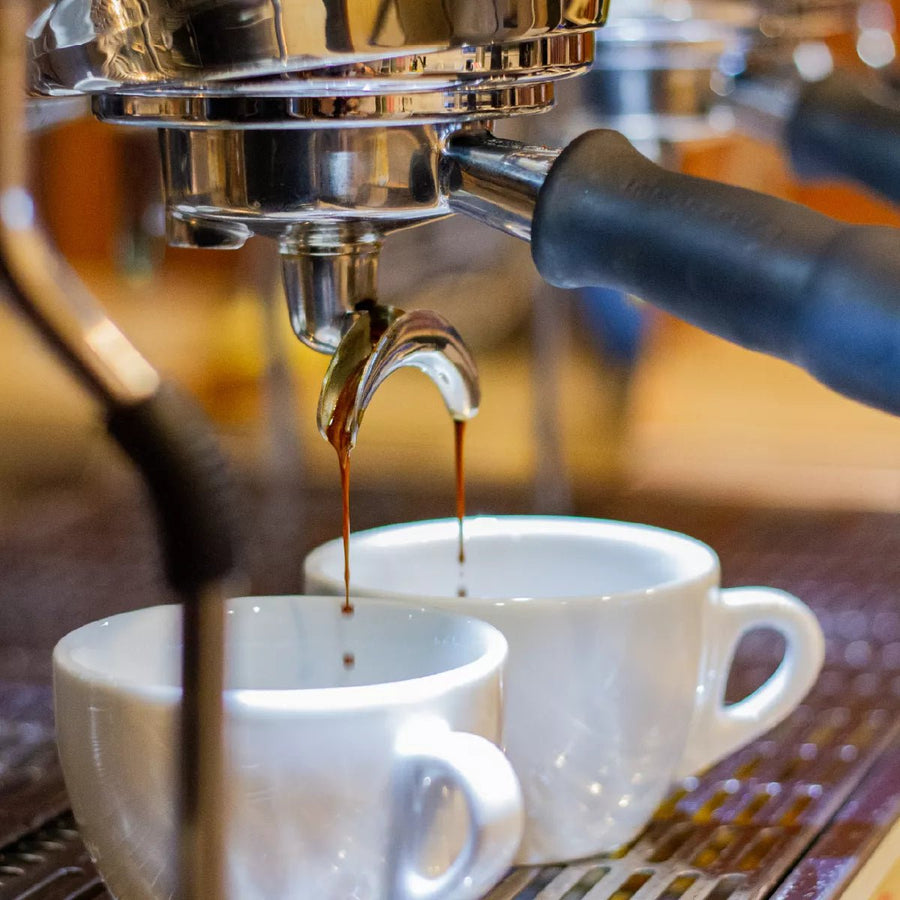Why SOE Single Origin Espresso Is Loved Among Baristas
Coffee Beans 101: Every Little Thing You Need to Understand About Espresso and Blended Coffee Beans
When it comes to coffee, recognizing the nuances of espresso and mixed beans can change your day-to-day mug. You'll find the unique features of Arabica and Robusta beans, and just how each effects taste and caffeine material. From the expanding process to roasting methods, every action contributes in your coffee experience. So, what makes the perfect brew? Let's check out the important components that add to an outstanding mug of coffee.
Recognizing Coffee Beans: Types and Ranges
When diving right into the world of coffee, understanding the kinds and selections of coffee beans is essential for every enthusiast. You'll mainly encounter 2 main types: Arabica and Robusta. Arabica beans are recognized for their smooth, complicated tastes and lower caffeine content, making them a favorite amongst coffee aficionados. On the other hand, Robusta beans load a punch with a more powerful, more bitter taste and greater high levels of caffeine degrees, frequently utilized in coffee blends.
Within these varieties, you'll locate various local selections, each bringing distinct attributes. As an example, Ethiopian Yirgacheffe supplies intense floral notes, while Colombian beans supply a healthy flavor profile. As you discover, remember to pay focus to handling techniques like cleaned or natural, as they can considerably affect the last preference. By familiarizing yourself with these beans and their tastes, you'll elevate your coffee experience and make even more educated choices in your developing trip.
The Expanding Refine: From Seed to Bean
When you check out the journey of coffee, everything begins with seed selection techniques that set the foundation for high quality. From there, farming and harvesting play crucial roles in making certain the beans thrive. Ultimately, handling methods change those gathered cherries right into the coffee beans you like.
Seed Selection Strategies
Choosing the appropriate seeds is necessary for producing top quality coffee beans, as it lays the structure for the entire expanding process. Pay interest to the seed's age and storage conditions, as fresh seeds have a tendency to germinate better. Take into consideration the disease resistance of different selections, as this can substantially impact your return.
Farming and Harvesting
As you support your coffee seeds right into flourishing plants, recognizing the farming and harvesting process is vital for accomplishing the finest flavor and high quality. Beginning by growing your seeds in well-draining soil, ideally in a shaded location to safeguard them from straight sunshine. As your plants grow, keep constant wetness, and be conscious of their need for nutrients. Trim routinely to advertise airflow and healthy development.
Hand-picking is commonly the ideal approach to assure only the ripest cherries are chosen. Timing is important; harvesting too late or also very early can impact the flavor account of your beans.

Processing Techniques Discussed
When you have actually harvested your coffee cherries, the following essential step is processing them to change those dynamic fruits right into the beans you'll make. There are 2 primary approaches: the dry process and the wet process. In the dry process, you spread out the cherries out in the sunlight to completely dry, permitting the fruit to ferment and present distinct flavors to the beans. On the various other hand, the wet process involves eliminating the fruit right away and fermenting the beans in water, causing a cleaner taste. After processing, the beans are hulled, arranged, and typically dried once again. Each method influences the flavor account, so try out both can help you discover your favored mixture. Recognizing these approaches is crucial to enjoying your coffee experience.
Roasting Strategies: Exactly How Flavor Is Established
When it involves roasting coffee beans, understanding roast degrees is key to revealing their one-of-a-kind flavors. Each toasting technique influences the scent and enhances the taste advancement process, offering you a richer coffee experience. Allow's discover how these variables integrated to boost your day-to-day mixture.
Roast Levels Discussed
Roast degrees play a vital duty in forming the flavor profile of your coffee. By recognizing these levels, you can better pick a coffee that matches your preference choices. Experiment with different roasts to find which one reverberates with you, enhancing your total coffee experience and pleasure.
Influence On Aroma
The roast degree not only influences the preference of your coffee but also considerably influences its fragrance. When you pick a light roast, you'll usually observe brilliant, flower notes that can make your coffee scent fresh and vivid. As the beans dim, the aroma shifts; a tool roast brings out a lot more balanced, caramelized scents, while a dark roast often tends to feature bold, great smoky undertones. Each roasting method releases different unpredictable substances, shaping exactly how your coffee smells. Furthermore, the quality of the beans plays an important duty; freshly baked coffee launches more aromatic oils, enhancing that enticing fragrance. Pay attention to the roast degree-- it's crucial to disclosing the complete aromatic experience of your mixture.
Taste Advancement Refine
As you discover the flavor growth procedure, you'll find that toasting strategies play an essential role in forming the taste profile of your coffee. The toasting temperature level and time straight affect the acidity, sweetness, and bitterness of the beans. Light roasts maintain more of the bean's initial flavors, highlighting flower and fruity notes.
Coffee vs. Blended Coffee: Key Distinctions
Coffee and mixed coffee each deal one-of-a-kind experiences that satisfy different preferences and preferences. Espresso is a focused coffee made forcibly warm water through finely-ground coffee beans, causing a rich, bold flavor and a velvety layer of crema on the top. It's frequently taken pleasure in as a shot or used as a base for beverages like cappucinos and coffees.
On the other hand, combined coffee incorporates different beans from various areas, developing a much more well balanced flavor profile. You'll typically locate blends that highlight sweet taste, body, or level of acidity, making them versatile for various brewing approaches. While coffee concentrates on intensity, blended coffee may offer a broader variety of tastes that can change with each sip.
Inevitably, your selection between espresso and combined coffee come down to your personal preference. Whether you crave a leisurely cup or a fast shock, both options have something delicious to provide.

Developing Approaches: Opening the Perfect Cup
When it comes to developing coffee, Single Origin Espresso discovering the right method can change your experience and boost your mug. Each developing technique has its special beauty and can substantially impact your coffee's flavor and scent. Using a French press enables you to enjoy a rich and robust brew, while a pour-over method gives a clean, intense mug with distinct flavors.
If you prefer espresso, spending in a quality machine can assist you grasp the art of pulling shots. Alternatively, for benefit, a single-serve covering system uses rate without compromising taste.
Don't neglect regarding chilly brew, which supplies a smooth, much less acidic coffee perfect for hot days. Experiment with various methods to uncover what resonates with your palate.
Sampling Notes: Recognizing Flavor Profiles
How can you genuinely value your coffee if you don't know what flavors to look for? Tasting notes are your overview to comprehending the complex world of coffee. When you sip, take note of the preliminary flavors that hit your taste buds. You may find fruity notes, like berry or citrus, or possibly a nutty touch. As you remain to taste, notice exactly how the flavors evolve-- this is referred to as the "surface." Some coffees could leave a chocolatey or sugar aftertaste, while others might have an intense, clean coating.
Think about the body of the coffee, too; is it ventilated and light or thick and syrupy? Do not forget acidity; a bright acidity can include vitality, while a reduced acidity could give a smoother experience. By identifying these taste profiles, you'll strengthen your connection with each mug, making coffee tasting a delightful trip of discovery.

Tips for Selecting and Keeping Coffee Beans
Choosing and saving coffee beans correctly can significantly improve your developing experience. Begin by picking top notch beans that fit your taste. Look for freshness; beans roasted within the last two weeks are suitable. Check the roast day on the product packaging, and get from regional shops or trusted roasters.
When you have your beans, keep them in an impermeable container to avoid direct exposure to light, air, and dampness. A dark, awesome area works best, so stay clear of maintaining them in the fridge or fridge freezer, as this can introduce wetness. Just grind the amount you need to keep freshness; whole beans preserve taste longer than pre-ground coffee.
Last but not least, try to use your beans within two to four weeks after opening for peak preference. Following these ideas will ensure your coffee remains savory and enjoyable, boosting your day-to-day mixture to brand-new heights.
Frequently Asked Questions
How Much Time Do Coffee Beans Remain Fresh After Roasting?
Coffee beans stay fresh for regarding 2 weeks after toasting - SOE. You ought to save them in a closed container, away from light and moisture. After that, their taste and scent start to decrease significantly

Can I Mix Different Coffee Bean Varieties?
Definitely, you can mix different coffee bean ranges! Explore blends can boost tastes and develop a distinct preference account. Just see to it to balance the staminas and attributes of each selection for the very best outcomes.
What Is the Perfect Work Dimension for Espresso?
For coffee, you'll want a fine grind size, regarding the structure of common salt. This permits perfect extraction, resulting in an abundant, savory shot. Experiment a bit to discover what matches your preference best!
Exactly How Does Elevation Affect Coffee Bean Taste?
Elevation affects coffee bean taste by influencing the development price and chemical composition. Greater altitudes cause slower growth, which boosts level of acidity and intricacy, providing your coffee a special and vibrant preference you will not neglect.
Are There Decaffeinated Variations of Espresso Beans?
Yes, there are decaffeinated versions of espresso beans. You can enjoy an abundant espresso flavor without the caffeine kick. Just search for "decaf" blends at your neighborhood coffee bar or specialized store.
Coffee Beans 101: Whatever You Need to Know About Espresso and Blended Coffee Beans.
When diving right into the globe of coffee, recognizing the types and varieties of coffee beans is necessary for every fanatic.When it comes to toasting coffee beans, comprehending roast degrees is essential to revealing their distinct flavors. Coffee is a concentrated coffee brewed by requiring warm water through finely-ground coffee beans, resulting in a rich, bold taste and a creamy layer of crema on top.On the various other hand, blended coffee integrates different beans from various areas, creating a more well balanced taste account.